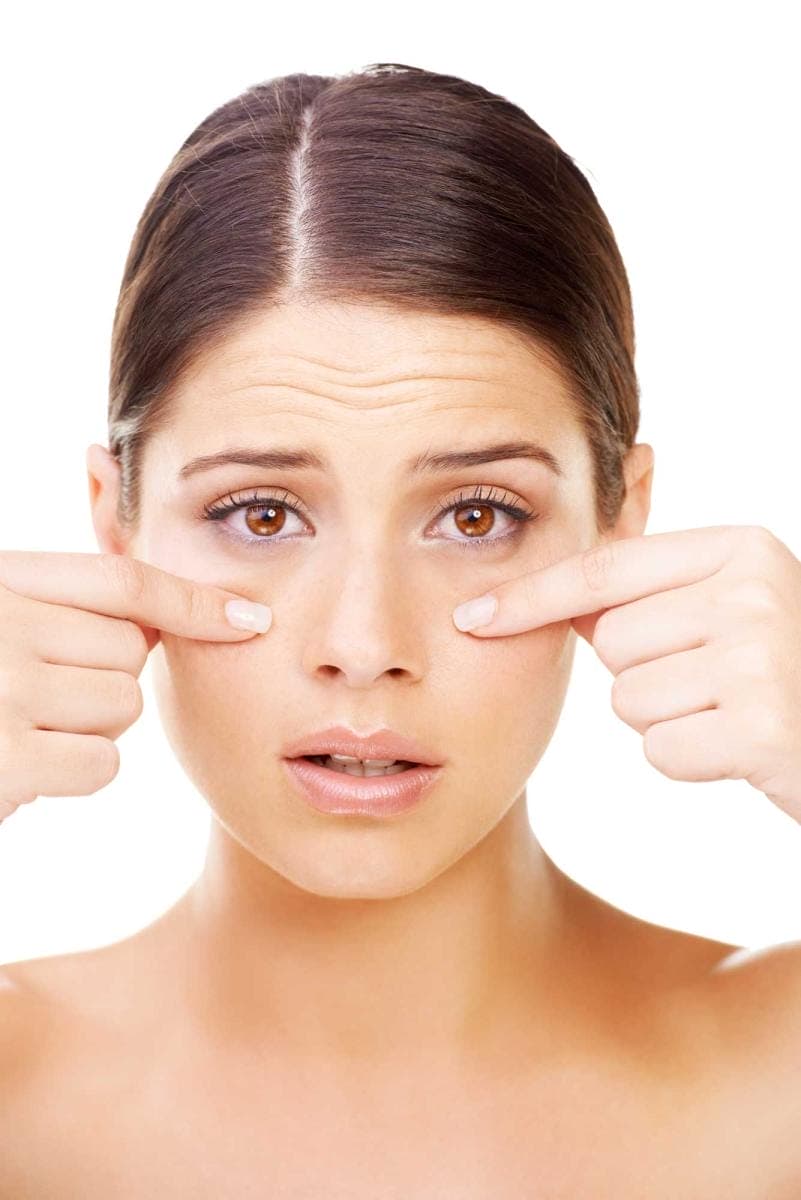Skincare, Trends & Opinions
What To Do When You Get Your First Wrinkle
The day you spot that very first wrinkle is oddly emotional. It’s just one line – maybe a tiny crease under your eyes or a faint indentation across your forehead – but it feels monumental. Like a tiny exclamation point on time itself. One day, you’re marveling at how smooth your skin is, and the next, you’re pausing in front of a mirror, lifting your brows, squinting, trying to figure out whether it’s a trick of the light or something more permanent.
Welcome to the wrinkle club. It’s not as scary as it seems, I promise. But it is a signal that your skin is evolving – and that now is the perfect time to show it a little more attention and care.
The Science Behind That First Line
Let’s start with what’s happening beneath the surface. Wrinkles are a natural part of aging, and they occur when the skin loses its elasticity and volume over time. Collagen, the protein responsible for giving skin its structure, begins to degrade in our mid-20s. Elastin, which gives skin its bounce, also decreases. Add in a slower cellular turnover rate and reduced oil production, and the skin becomes thinner and drier, making lines more likely to appear.
External factors accelerate the process. UV exposure, pollution, stress, smoking, poor sleep, and even repetitive facial expressions all leave their mark. Basically, life leaves a trail – and skin keeps the receipts.
But here’s the upside: modern skincare is incredibly sophisticated. With the right strategy and ingredients, your first wrinkle doesn’t need to mark the start of panic. Instead, it’s an invitation to build a more intentional skincare routine.
When Do Wrinkles Usually Show Up?
According to a study published in the Clinical, Cosmetic and Investigational Dermatology journal, most people begin to notice their first dynamic wrinkles – those caused by facial expressions – between the ages of 25 and 35. Static wrinkles, which remain even when your face is at rest, tend to appear later unless sun damage or other lifestyle factors speed up the process.
So, if you’ve noticed a line or two in your late twenties or early thirties, you’re not alone – and you’re not early. You’re right on time.
Step One: Don’t Freak Out
Yes, easier said than done. But that wrinkle doesn’t mean you’re aging overnight. Think of it as a sign that your skin is communicating with you. You now have the opportunity to strengthen, support, and nourish your skin more thoughtfully than ever before.
The good news? There are dozens of proven ingredients and treatments that really do make a difference. The key is consistency, not perfection.
Focus on Skin Support, Not Just Line Erasers
Instead of fixating on erasing the wrinkle, aim to strengthen the skin barrier, stimulate collagen production, and support hydration. That’s how you get results that actually last.
Let’s break it down.

Cleanse Gently, But Thoroughly
Harsh cleansers strip your skin’s natural oils and disrupt the barrier. If your skin starts to feel tight after washing, it’s time to switch.
Recommended Brands:
- KraveBeauty Matcha Hemp Hydrating Cleanser is soothing, antioxidant-rich, and doesn’t leave skin dry.
- La Roche-Posay Toleriane Hydrating Gentle Cleanser is another favorite – great for sensitive or first-time wrinkle-wearers.
Introduce a Retinoid or Retinol
This is the gold standard for wrinkle prevention and treatment. Retinoids (vitamin A derivatives) increase cell turnover, stimulate collagen production, and fade fine lines.
Start with an over-the-counter retinol if you’re new. Use it 2–3 nights a week, paired with moisturizer to buffer any irritation.
Recommended Brands:
- Paula’s Choice 1% Retinol Treatment is powerful but layered with soothing ingredients.
- Versed Press Restart Gentle Retinol Serum is great if you’re on the sensitive side.
- The Ordinary Retinol 0.5% in Squalane offers solid performance for the budget conscious.
Hydration, Hydration, Hydration
Dehydrated skin makes wrinkles more visible. Your skin needs both humectants (which attract water) and occlusives (which lock it in).
Look for products with hyaluronic acid, glycerin, squalane, and ceramides.
Recommended Brands:
- Reviva Labs Hyaluronic Acid Serum is silky, fast-absorbing, and layers beautifully.
- Dr. Jart+ Ceramidin Cream rebuilds the moisture barrier while delivering rich hydration.
- Neutrogena Hydro Boost Water Gel is widely loved for its lightweight texture and affordable price point.
Don’t Skip Moisturizer – Even If You’re Oily
Oil doesn’t equal hydration. In fact, oily skin can still be dehydrated. A good moisturizer balances everything out and keeps your skin resilient.
Recommended Brands:
- First Aid Beauty Ultra Repair Cream is excellent for calming and nourishing.
- Youth to the People Superfood Air-Whip Moisture Cream is a featherlight dream for combination skin.
Sunscreen Is Non-Negotiable
UV damage is the leading cause of premature wrinkles. Wearing sunscreen every single day – yes, even when it’s cloudy – will do more for your skin than any anti-aging serum ever could.
Recommended Brands:
- EltaMD UV Clear SPF 46 is a holy grail for many because it’s lightweight, non-greasy, and acne safe.
- Supergoop! Unseen Sunscreen SPF 40 is invisible, non-chalky, and makeup friendly.
Try Peptides and Antioxidants
Peptides signal your skin to produce more collagen. Antioxidants neutralize the free radicals that damage skin cells and accelerate aging.
Recommended Brands:
- The Inkey List Peptide Moisturizer is a great beginner option.
- SkinCeuticals C E Ferulic is pricey but praised for its antioxidant performance.
- Timeless Vitamin C Serum 20% offers a strong, more affordable alternative.
Add Facial Massage or Tools
Lymphatic drainage and muscle stimulation can soften tension wrinkles – especially those on the forehead or around the eyes. You don’t need a fancy device (though they help). Even a two-minute daily massage with your fingers while applying moisturizer can work wonders.
If you want to step it up, gua sha stones or microcurrent tools like NuFACE Mini are popular for a reason – they lift, tone, and smooth with consistent use.

Watch the Lifestyle Triggers
Skincare is powerful, but it’s not the whole picture. What happens inside your body shows up on your skin.
- Prioritize sleep. Aim for 7–8 hours nightly. Skin regenerates during rest.
- Manage stress. Cortisol (your stress hormone) breaks down collagen.
- Stay hydrated. Water alone won’t plump your skin, but dehydration definitely dulls it.
- Eat skin-loving foods. Look for those rich in vitamin C, E, zinc, omega-3s, and antioxidants. Think berries, avocado, salmon, leafy greens.
- Cut back on smoking and alcohol. They’re both wrinkle accelerators, no sugarcoating it.
What About Professional Treatments?
If you’re ready to invest more, there are options beyond your bathroom shelf. Chemical peels, microneedling, LED light therapy, and laser resurfacing can all help improve skin texture and boost collagen. Botox is a popular route for expression lines, though it’s not everyone’s cup of tea – and that’s totally fine.
Start with a consultation from a board-certified dermatologist or licensed aesthetician. They’ll guide you based on your skin type, goals, and comfort level.
Aging Isn’t the Enemy
The first wrinkle marks a new chapter, not the end of your skin’s story. And here’s the truth: every line your face earns is evidence that you’ve lived, expressed, laughed, worried, grown. You don’t have to erase them all to feel confident.
Skincare isn’t about staying 22 forever. It’s about honoring your skin, working with it, and supporting it as it evolves.
That first wrinkle? It’s a conversation starter. One that says, “Okay, let’s take care of you now.”
FAQs
Is it normal to get a wrinkle in your 20s?
Yes. Especially around the eyes or forehead, where facial expressions are most repetitive. These are usually dynamic wrinkles and often soften with good skincare.
Can you reverse a wrinkle once it appears?
You can soften and reduce the appearance, but most wrinkles won’t disappear completely. Consistent use of retinoids, hydration, and sun protection can make a dramatic difference.
Do natural products work on wrinkles?
Yes, if they contain active ingredients like bakuchiol, peptides, or antioxidants. However, “natural” doesn’t always mean more effective – look for evidence-based formulas.
What’s better: retinol or vitamin C?
Both have different roles. Retinol boosts cell turnover and smooths wrinkles. Vitamin C protects and brightens. Ideally, use both (vitamin C in the morning, retinol at night).
Is Botox the only way to get rid of forehead lines?
Not at all. It’s effective but not essential. Topical treatments, massage, lifestyle tweaks, and consistency with skincare can all soften forehead lines significantly.




